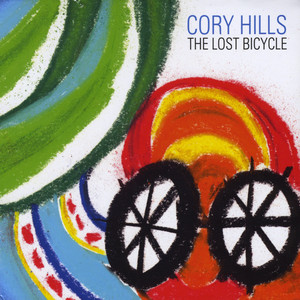
- 歌曲
- 时长
简介
The six stories contained herein are all part of The Percussive Art of Storytelling, a percussion outreach program I created that is designed to bring fun and accessible classical music to children in underserved communities. All pieces in The Percussive Art of Storytelling set originally written or adapted children’s stories to originally composed percussion music. This project would not be possible without the generous support of the Zakoura Family Fund and Reach Out Kansas, Inc. Storytelling is a method of communication that has spanned the ages. Whether stories serve as oral histories, religious parables, or simple bedtime entertainment, they have become an important staple for children and adults alike. Many stories are percussive, either in the rhythmic structure of the iambs, or in the onomatopoeia of the words. This project fuses these elements into an interdisciplinary performance that is both visually and aurally stimulating as well as just plain old fun. Njovu Njovu (pronounced “in-joh-voo”) is an adapted version of How the Elephant Got its Long Trunk by Rudyard Kipling, from his famous Just So Stories. It is a silly and simple story that is set against music created through a complex compositional process. This piece was composed by assigning notes to base pairs of DNA (A, G, C, T) and their complements in retrogradable and inversional symmetry. Njovu was commissioned by the University of Kansas Biodiversity Institute and Hall Center for the Humanities, and is dedicated to interdisciplinary arts collaboration. Tikki Tikki Tembo Arlene Mosel’s classic retelling of this Chinese folktale had me in stitches as a kid. I mean, seriously, who names their child Tikki Tikki Tembo No Sa Rembo Chari Bari Ruchi Pip Peri Pembo? Later in life, I have come to enjoy the inherent rhythmic qualities in the name and the rest of the story. I originally set Tikki Tikki Tembo against improvised hand drumming, but have evolved the performance into a more structured piece that incorporates improvisational elements. The Lost Bicycle The Lost Bicycle began as a series of improvisations for more avant-garde percussion works, until I noticed a particular motif between blocks and cowbells that sounded like a bicycle. In a fit that was half inspiration and half perspiration, I penned the story for The Lost Bicycle, and the musical composition quickly followed. Particularly strong in its use of leitmotifs, this story is responsible for the growth and development of The Percussive Art of Storytelling. Without it, and subsequent grants and awards, I would have had neither the time nor the notion to write and compose more stories. Plus, each time I perform it, I get to see how long I can hold my breath. Phonetic Punctuation This piece pays homage to the life and career of world-renowned pianist and entertainer Victor Borge; specifically, a routine of his called Phonetic Punctuation. In this routine, Borge would read a story and phonetically sound out the punctuation marks as they occurred, creating a hilariously awkward reading. In this version, I assign different percussion instruments to the various punctuation markings. The ellipses are my favorite… The Turnip Based on an old Russian folk tale retold by Alexei Tolstoy, The Turnip tells how even the big and strong need the help of the small. The Turnip lends itself perfectly to musical rendering. As each character is added to the mix, from an old man all the way down to a mouse, an additive rhythmic process is added, creating a chaotic atmosphere as more characters attempt to pull the turnip up. Ponderosa Pine Ponderosa Pine was commissioned by the National Parks Service while I was Artist-in-Residence at Rocky Mountain National Park in July 2008. Following my residency, I wrote a story about the native trees in the park which only seemed fitting after spending two weeks living underneath their awesome presence. Keeping with the natural feel of the piece, all sounds in Ponderosa Pine are earthen – either wood (temple blocks, wood blocks, log drums,) or clay (udu). And without standing on a soapbox, here’s to each of us taking care of our own ponderosa pine. Biography Percussionist, composer, and improviser Cory Hills thrives on breaking down musical barriers through innovative and creative endeavors. He has received degrees from Northwestern University, Queensland Conservatorium, and the University of Kansas, and was awarded a research fellowship to Institute Fabrica. An advocate of new music, Hills has commissioned and premiered dozens of new works for solo percussion. He is the creator of The Percussive Art of Storytelling, a percussion outreach program that brings classical music to underserved communities. For this work, Hills has been the recipient of numerous enabling artists grants, including a Zakoura Family Fund Grant, and was named the 2009 Emerging Artist for the Kansas Arts Commission. As a member of SI2, an interdisciplinary arts duo with Matthew Coley, Hills has been a featured performer at the 2008 convention for the International Society for Improvised Music and the 2009 Days of New Music Festival in Chisinau, Moldova. In addition, Hills sponsors the annual Con/un/drum Solo Percussion Composition Competition designed to increase repertoire for solo percussion. As an advocate for percussion as a global artistic discipline, Hills has been named artist-in-residence at Rocky Mountain National Park, Wildacres, and a fellow at the OMI international artist’s colony. Hills is a frequent guest artist and clinician throughout North America and Europe, giving numerous master classes and recitals, and is a member of the Percussive Arts Society’s Education Committee. He has performed with the National Symphony Orchestra, Queensland Choir, and Topeka Symphony, and soloed with the Queensland Symphony Orchestra and The United States Army Band. Hills is an artist for Innovative Percussion and Westphal Percussion. For more information, please visit www.coryhills.com.




